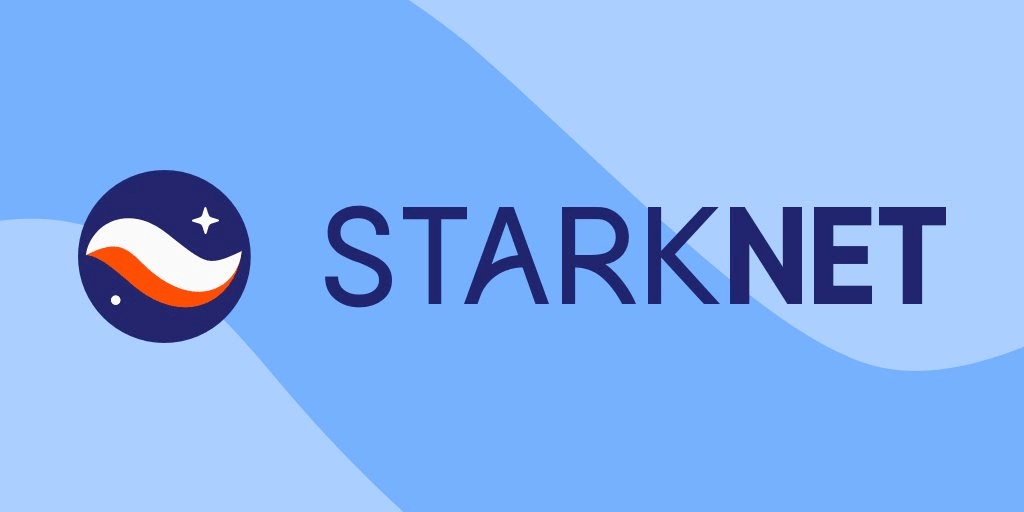StarkNet Cryptocurrency and the Blockchain: What Are They?
The Ethereum network can be scaled via StarkNet, which is a layer 2 decentralized scaling solution. The ZK-STARK cryptographic technique underpins StarkNet's underlying architecture.
As of the month of October 2022, a beta version of the primary StarkNet network was successfully...

The Ethereum network can be scaled via StarkNet, which is a layer 2 decentralized scaling solution. The ZK-STARK cryptographic technique underpins StarkNet’s underlying architecture.
As of the month of October 2022, a beta version of the primary StarkNet network was successfully launched, albeit with restricted capabilities. In the meantime, the project ecosystem already comprises more than 120 projects, and the StarkNet mainnet conducts 3-6 million transactions per week on average.
The ERC-20 Starknet Governance Token, also known as STRK, has already been distributed by the StarWare creators to investors, staff, and the development fund. It’s possible that trading and free circulation of STRK will commence at the beginning of 2023.
Who Made StarkNet?
No, the project does not have anything in common with Tony Stark. The Israeli business StarkWare Industries, which was founded in 2018, is now working on the development of the StarkNet L2 network. The well-known cryptographer Elie Ben-Sasson, a professor at Technion University and a co-inventor of the STARK technology, is one of the pioneers of the project.
Ben-Sasson has also previously taken part in the development of the anonymous cryptocurrency Zcash. The names Mikhail Ryabtsev (co-author of ZK-STARK), Uri Kolodny, and Alessandro Chiesa (co-founder of Zcash) are well recognized in the cryptocurrency community. The three men were also among the company’s co-founders.
Between January 2018 and May 2022, the company participated in multiple investment rounds and was successful in raising a total of $273 million over that time period. The first use of ZK-STARK technology to be used in a commercial setting was the launch of StarkEx in June of 2020. This is a local way for scaling Ethereum within certain decentralized apps. The dYdX, Rhino, Sorare, and Immutable platforms are already making successful use of this scaling method for Ethereum.
The deployment of the alpha version of the StarkNet main network at the end of 2022 was the next step in the development of the project, which took place at the same time.
It is speculated that in the not too distant future, the StarkEx platform will evolve into the “third layer” of the project, which will be implemented on top of StarkNet for particular DeFi protocols in order to facilitate the simplification of their utilization and the reduction of their associated costs.
When is StarkNet going to release its own cryptocurrency?
The StarkWare team announced their intention to issue a project governance token in July 2022. This token will play an important part in the ecosystem’s decentralized governance as well as its ongoing upkeep.
The status of the asset’s issue has not yet been determined. On the Ethereum network, StarkWare will distribute the first 10 billion ERC-20 tokens that are created. They will be dispersed in the following manner:
- 17% of the funds go to investors;
- 32.9% go to key community members (StarkWare workers, consultants, and third-party developers);
- and 50.1% go to organizations that are part of the StarkNet Foundation.
According to the plans, only 10% of the tokens would be kept available for usage by the fund. The remaining 90% of the tokens will be distributed among various community prizes, grant programs, donations, and other initiatives.
The tokens that have been assigned to investors and the development team are not available for purchase for the first year and will be gradually made available for purchase over the next four years.
The following are the primary roles that the STRK token will play:
- engagement in network management,
- payment of commissions for StarkNet transactions,
- participation in the consensus method,
- and processing of StarkNet transactions are all required for membership.
The launch of the crypto asset is scheduled for the month of October in 2022. At the beginning of 2023, the StarkNet Foundation is planning to conduct an airdrop among the members of the community. It has been decided not to publicize a certain snapshot date in order to decrease the number of players who are “retrodrop hunters.”
What Advantages Does StarkNet Have over Other L2 Ethereum Solutions?
Arbitrum and Optimism, both of which are based on the technique known as optimistic rollups, are now the two of the most widely utilized L2 networks in terms of the volume of blocked liquidity (TVL) and the number of launched DeFi protocols.
The manner in which financial dealings are processed is where StarkNet most differentiates itself from its rivals. For the sake of expediting the processing of optimistic rollups, it is assumed that all transactions are real unless it can be demonstrated otherwise. In the case that a node turns out to be malicious and accepts wrong transactions, there is a seven-day period during which the transaction can be disputed and canceled by verifiers. During this time, the transaction can be reversed.
When conducting business on StarkNet, using ZK-STARK as your authentication protocol of choice enables the sending of proof of authenticity with a transaction, and there is no time window during which a transaction can be contested. This results in an improvement in both productivity and a decrease in the cost of gas.
The utilization of an alternative verification mechanism known as ZK-SNARK is what differentiates this project from zkSync, which is also an exciting L2 project.
Several cryptographers are of the opinion that the ZK-STARK technology:
- more secure during the entire process of installation and operation;
- potentially up to ten times more scalable than ZK-SNARK;
- immune to assaults carried out utilizing quantum computers.
